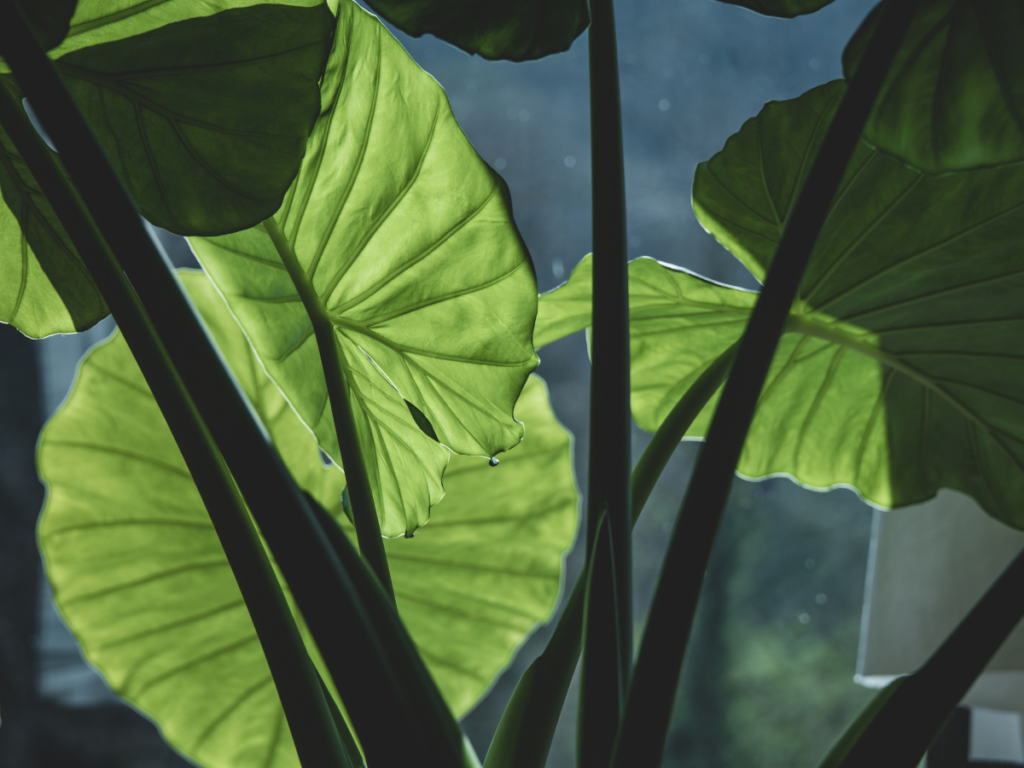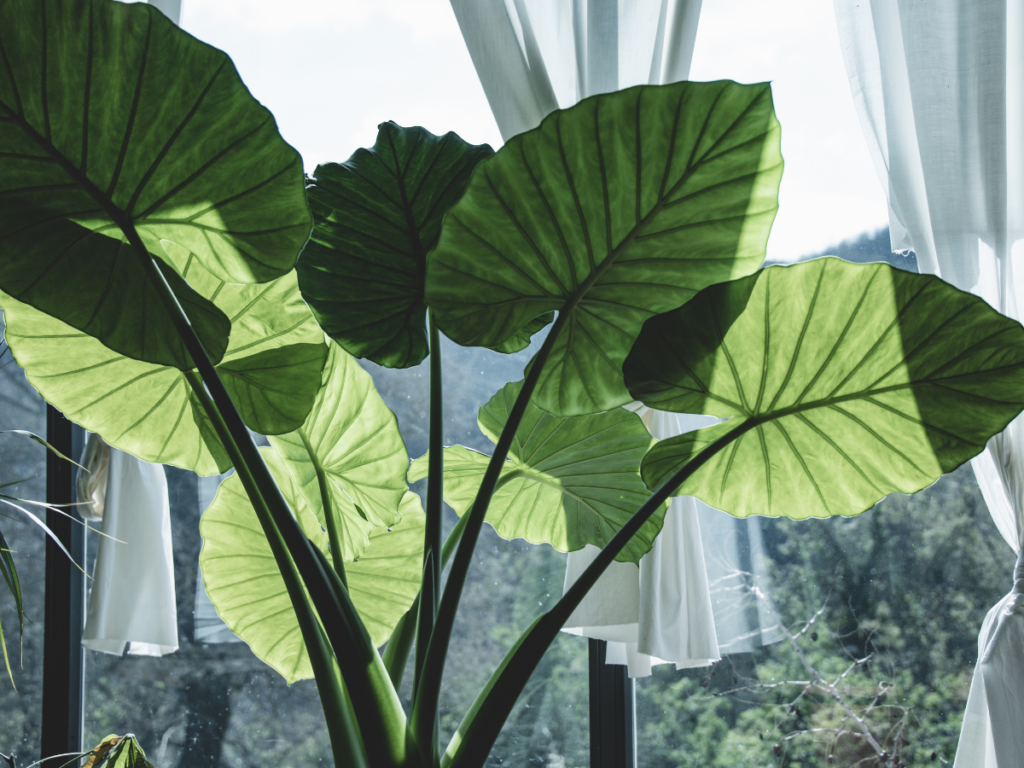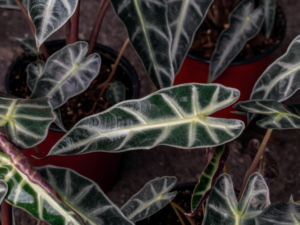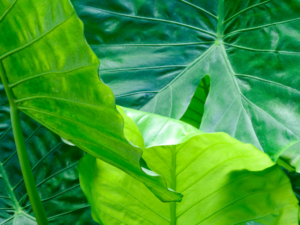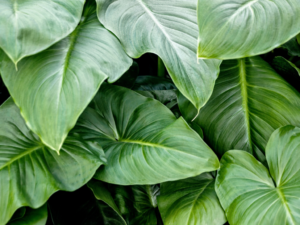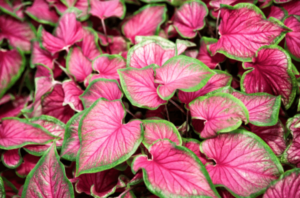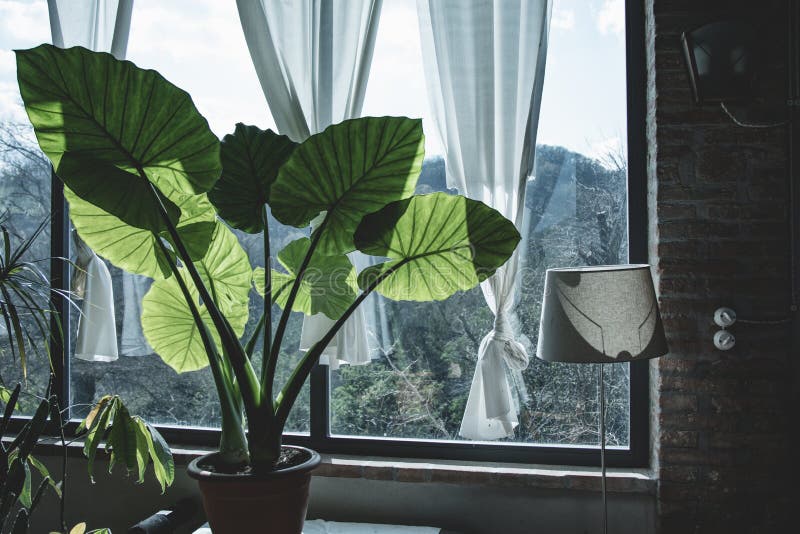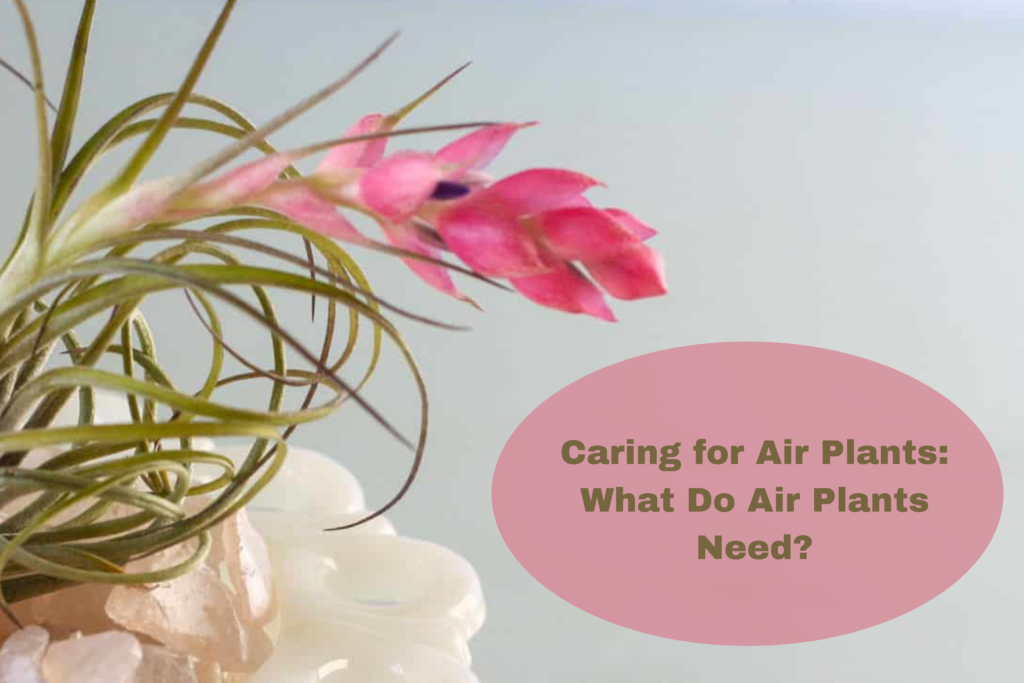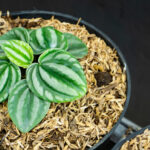HousePlantJoy is supported by our audience. When you purchase through one of our links, we may earn a small affiliate commission. As an Amazon Associate I earn from qualifying purchases. Your cost is not affected.
==================
Why Create an Elephant Ear Plant Indoor Garden?
If you have a vacant large space inside your house, it would be great to create an elephant ear plant indoor garden. This tropical plant boasts large foliage with distinguishable patterns and colors, brightening up your home and making it more enjoyable and relaxing.
In this article, you will learn basic things about elephant ear plants which includes
- the different varieties of elephant ears
- frequently asked questions on elephant ear plants
- the precaution you have to take when keeping elephant ear plant indoor
This giant beauty is probably what your indoor jungle is missing! The elephant ear plant is a popular plant decoration for homes, thanks to its huge leaves and fascinating shades of colors. They leave a bold impression that will instantly turn your interior from a four to a ten-out-of-ten. You can enjoy your elephant ear plant indoor garden in varieties of shades and designs.
What are Elephant Ear Plants?
There’s no way you haven’t seen at least one elephant ear plant in your life because there are more than 3,000 species of them all over the globe. Besides, they are everywhere! Plant lovers like to use them for decorations because of their beautiful leaves, so even though you don’t have a basic idea, you’ve probably seen one somewhere.
Elephant ears are tall tropical perennial plants that grow from about three to eight feet in height. They are native to the tropical parts of Asia and Central Texas. Since it is a kind of plant that enjoys heat, it thrives in high-temperature environments and grows less tall in colder parts of the world.
They produce flowers occasionally, but they are more popular for their leaves. It varies per variety, but in general, the leaves of elephant ears resemble the ears of an elephant (surprise!) or the shape of a heart. The color range of elephant ears is so wide that you can find green, pink, purple, or even black elephant ears!
Some of the Popular Types of Elephant Ear Plant for Indoor Garden
The elephant ear belongs to the taro varieties that multiply through bulbs. Even if the leaves die out, the bulb can grow another shoot, that is why it’s perennial. To familiarize yourself with this exotic giant houseplant, here are four common varieties of elephant ear plants for your indoor garden.
1. Alocasia
This variety of elephant ears is one of the most common corner room decors that you will see. Alocasia is usually dark green, but you can find it in lighter shades of green, as well. There are also variegated types such as alocasia albo.
In addition, Alocasia originates in the southern tropical areas of Asia and East Australia. In Vietnam, people use Alocasia not only for beautifying a space but also for food. You don’t want to do this without research first because elephant ears are poisonous when uncooked!
2. Colocasia
This variety of elephant ears is also called Taro. It’s a challenging task to differentiate Colocasia from Alocasia, but it’s not impossible. While they have almost the same color ranges, size, and leaf shape, you can tell them apart through the direction of the tip of their leaves, with Colocasia pointing down while Alocasia pointing upward.
3. Xanthosoma
Another one of the varieties of elephant ears is Xanthosoma. This type of elephant ear is, perhaps, among the easiest to distinguish along with Caladium plants. Xanthosoma’s leaves are noticeably shaped like pointy arrows, with a matte surface and softer, thinner leaves than the rest of its kind.
4. Caladium
Caladium is the softest variation of the elephant ear plant. It is the easiest variation to distinguish because of its pink, red, or white leaves instead of its other plant cousins, primarily green. This kind has the most compact build and is smaller than the average elephant ear, measuring a foot and a half at most.
Imagine watching your bulbs sprout into a beautiful little plant. Then watch it grow into the larger, but soft Caladium beauty. These make great gifts, too! Provide the bulbs, plant pots, and instructions to the lucky recipient. In time, they share some favorite photos of this colorful plant.
Frequently Asked Questions on Elephant Ear Plant Indoor Garden
1. How to grow an elephant ear plant indoors?
It’s not enough to consider the kind of elephant ear that would suit your taste or your home interior best. You should also consider the amount of time and effort you can allot to take care of this plant. Elephant ears do not require that much effort, but you still have to be particular with providing for their needs.
Sure, they’re a little sensitive and picky, but you can grow them without having to tend to them every two minutes. Here are tips on how to develop an elephant ear plant indoors.
2. What is the best pot size for the elephant ear plant?
Despite this plant being more extensive than your usual indoor plants, growing them in a container, or a pot is possible. They naturally grow easier on t, but with the right kind of soil, fertilizer, care, and container size, you can watch your plant thrive in a pot, too. What size should you get for your elephant ear?
I recommend starting with a large pot already with about 18 inches in width and 16” in depth. A large container will let your elephant ear grow freely, so you won’t need to repot them for a few years. When they outgrow the pot, though, then it’s time to move them to a bigger one.
3. How much water do elephant ear plants require?
As much as you can give them! I can’t stress that enough. Elephant ears need a lot of moisture in the soil to keep them alive, so if you have to water them every single day without fail, do so with eagerness.
Elephant ears can even benefit from being submerged in water about six inches above the soil. Especially if you love somewhere dry and hot, you should never let the soil dry out completely. If your elephant ears are browning, it could be because they are under-watered and too exposed to the sun.
5. Which area in the house is the best to put an elephant ear plant?
Place your pots of elephant ears somewhere with full sun to partial shade, though they may enjoy partial shade the best. Full sunlight is alright, but they get too much of it if they start browning and wilting. If you can’t help but put your elephant ears somewhere sunny, make sure you filter the sunlight, at least.
6. Does the elephant ear plant for an indoor garden require a particular type of soil?
If you strive to watch your elephant ears grow in the best way possible, plant them in soil that resembles their native soil. Since they are wetland plants, maintain a well-moisturized (almost wet), mildly acidic soil. You can also add some organic matter like moss to the earth for the best results.
7. Does an elephant ear plant need fertilizer?
With their size, expect that your elephant ear plants will be heavy-feeders! I would suggest that you use organic compost and fertilizers for your elephant ears and put in a lot of water and nitrogen there. Fertilize them every three to four weeks, as needed.
8. How much humidity is sufficient for the growth of an elephant ear plant?
Because of the tropical nature of elephant ears, they tend to thrive in areas with lots of humidity. The outdoors is great for this, but since we’re talking about growing elephant ears indoors, you’d have to compensate. You can do this by giving them above-average levels of air moisture. You can provide humidity by using a humidifier, a spray mist, or a humidity tray.
9. What kinds of pests should I look out for?
Always watch out for pests no matter what kind of plant you have at home. Aside from the possibility of an infestation that might ruin your plant, it might also make your home situation a bit tougher. For elephant ears, spider mites are the most notorious pests to see.
Spider mites enjoy the texture of the leaves of elephant ears. You should also keep an eye out for thrips. The best way to keep pests away is always to make sure to wipe the leaves of your elephant ears clean to get rid of dust, dirt, or insects that might have already clung to your plant.
10. At what temperature does the elephant ear plant thrive best?
I know I keep mentioning that elephant ears are tropical plants, but it’s crucial to understand how to take care of elephant ears indoors. Because they are tropical plants, they love the heat like no other! Temperatures below 50 degrees Fahrenheit can be detrimental to the growth and survival of your plant.
Additionally, just because they love the heat doesn’t mean you can place them under the sun for too long. In case you missed it, I mentioned here how much light your plant needs. Direct sunlight will cause browning in different areas of your plant!
Some Cautions When Creating an Elephant Ear Plant Indoor Garden
Elephant ear plants, especially the elephant’s ear variety, are incredibly invasive and won’t hesitate to take over your garden! Thus, if you’re planting elephant’s ear indoors, ensure you place them in a separate container. Otherwise, they will devour your other plants. Due to their size, they can also block other plants from the sun, which is definitely not ideal.
Another crucial point to mention about elephant ears is that they are poisonous. If you find yourself needing to care for your elephant ear plants, it’s essential to wear some protective gear, especially given their toxicity. They can cause skin or eye irritation upon contact. You should consider this if you have young children or pets at home. Stay safe while you tend to your garden!
Conclusion
Growing elephant ear plant indoor garden gives you joy and satisfaction. It will lift your mood when you see your houseplants displaying leaves in varying colors. You feel like you are in a “jungle” but in reality inside your house relaxing. Knowing the different varieties helps you to appreciate this giant beauty. So, why not start your elephant ear plant indoor garden and see the difference it will make in your space.
Read More:
https://houseplantjoy-temp.siterubix.com/growing-a-new-hobby-with-houseplants/

